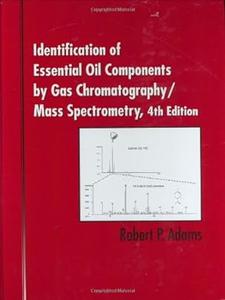
Free Download Robert P., Dr. Adams, "Identification of Essential Oil Components By Gas Chromatography/Mass Spectrometry, 4th Edition"
English | 2007 | ISBN: 1932633219 | PDF | pages: 809 | 6.5 mb
Since it is impossible to identify some terpenes by mass spectrum only, the Adams library with retention times and Kovat's indices is the only terpene library that one can use to identify more than 95% of the components in common essentials oils with certainty. A comprehensive collection of mass spectra and retention times of common components in plant essential oils, this reference covers 2,205 compounds, each including:
RT retention time on DB-5 capillary column
AI arithmetic retention index
KI Kovat's retention index
CAS# chemical abstracts service number
MF molecular formula
FW formula weight
MSD LIB# entry number in library
CN chemical name
List of synonyms
Source of compound used for spectrum. If the compound occurs in nature, two additional sources for the compound (concentration at % oil, plant name, literature reference) are included.
All 2,205 compounds have been analyzed from their original sources on an HP5971 MSD mass spectrometer using HP Chemstation software. In addition, the library (including retention times) is now available for the most common mass spectrometer/computer systems.
The 4th Edition now includes:
An additional 600 compounds
2,205 compounds analyzed from their original sources
Larger and easier to read mass spectra
Occurrence nature information
37% more content!
This is the fourth edition on mass spectra and retention times of common components in plant essential oils. It differs from the previous editions in several important areas: 600 compounds have been added, the sources of origination for each compound are listed, the mass spectra are larger and easier to read, occurrence nature information is now included and all 2,205 compounds have been analyzed from their original sources on an HP5971 MSD mass spectrometer using HP Chemstation software. In addition, the library (including retention times) is now available for the most common mass spectrometer/computer systems.
